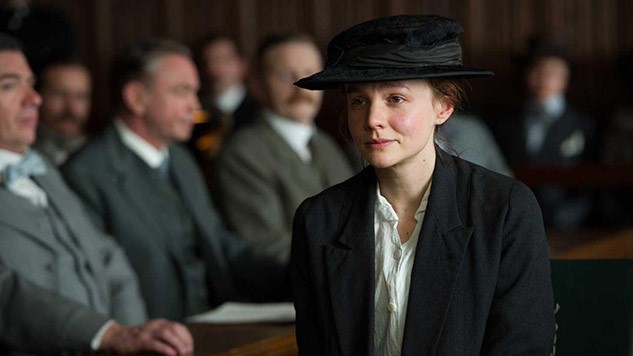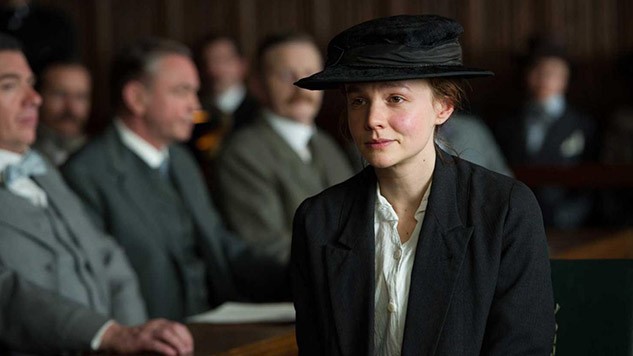If you’ve seen the movie Suffragette, you’ll remember the scene when Maud gives evidence in a House of Commons committee room about her life in the laundry. You may also remember how overwhelming male her audience was. The committee, chaired by Lloyd George, is made up of MPs who were all men in this period.

Everyone else in the room is male too, except for Maud’s friends at the back of course, and – a female typist. The typist is there sitting near the front, her fingers tapping away at a keyboard, taking down the minutes of evidence. You only see her briefly, but she’s quite noticeable as another woman in the room.
Was this realistic? In a word – yes. The typist would have been one of ‘Ashworth’s Girls’. May Ashworth (1863-1928) was a businesswoman who successfully applied to be Official Typist to the House of Commons in 1895. She had set up her own business, Ashworth & Co, in Victoria Street, Westminster, at the age of just 25. The Serjeant at Arms, who appointed her, wrote to May that she should keep in the type writing room at the Commons as many machines as she thought necessary, and place a sufficient staff of skilled operators also qualified to write shorthand at the disposal of Members.
May described the situation 18 months after her appointment as follows:
‘We are popular with all classes in the House, as you see we are strictly a non-political body and are patronised alike both by Whig and Tory… You see most of our work is done in emergency – without any notice. For instance, an MP rushes into our room and begins at once to dictate something or another…. The MPs evince great interest in our work, and often express wonderment at the great speed obtained by the girls.’
Although initially appointed to serve the MPs, Ashworth’s soon began to take on work for offices and departments in both Houses of Parliament, including typing Parliamentary debates from the establishment of the Official Report in both Houses from 1909, and some work for committees including the Marconi Committee in 1913. It’s therefore entirely likely they would have been typing up the committee which heard Maud give evidence on the laundry.
May married William Paull Jewill-Rogers in 1900 and took his surname, and he became a partner in her business. However the business was still called Ashworth’s, she continued to run it (including throughout the First World War when he was in the Army), and after they divorced in 1920 she was once again the sole owner. The business expanded to satisfy new demands as necessary. In 1919 when a new contract was agreed with Parliament, scales of charges were set out for shorthand, typing, mimeography, and an impressive range of translation from and to other languages (French, German, Spanish, Italian, Portuguese, Dutch, Norwegian, Danish, Swedish, Latin and Greek as standard, with Russian and Oriental languages ‘by arrangement’).
May died in 1928, and the business was sold to another woman, Miss Gladys Gowdey, who carried on the relationship with Parliament. Ashworth’s continued as official typists to Parliament until well after the Second World War, when they and their Parliamentary contract were taken over by Norma Skemp Secretarial Agency. You can read more about May Ashworth in her entry in the Oxford Dictionary of National Biography (subscription required, or via your local library http://www.oxforddnb.com/view/article/65767.
Mari Takayanagi, Vote 100 Joint Project Manager and Co-Curator

My Grandfather’s wife was May Ashworth. He was 24 when they married.
LikeLike
Hello, really fascinated to hear this! Perhaps we could email – I have sent you a direct message on Twitter.
LikeLike